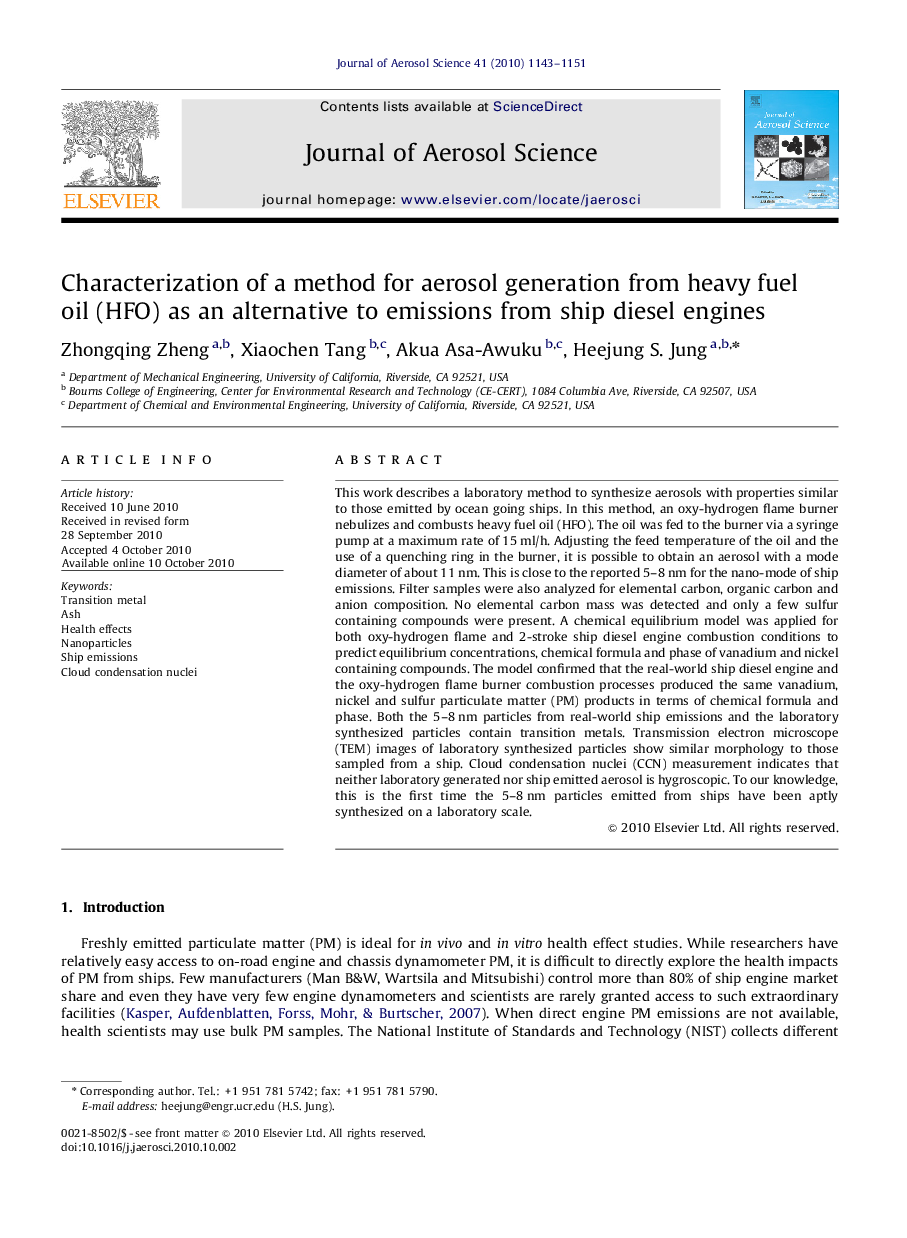| کد مقاله | کد نشریه | سال انتشار | مقاله انگلیسی | نسخه تمام متن |
|---|---|---|---|---|
| 4452814 | 1312106 | 2010 | 9 صفحه PDF | دانلود رایگان |

This work describes a laboratory method to synthesize aerosols with properties similar to those emitted by ocean going ships. In this method, an oxy-hydrogen flame burner nebulizes and combusts heavy fuel oil (HFO). The oil was fed to the burner via a syringe pump at a maximum rate of 15 ml/h. Adjusting the feed temperature of the oil and the use of a quenching ring in the burner, it is possible to obtain an aerosol with a mode diameter of about 11 nm. This is close to the reported 5–8 nm for the nano-mode of ship emissions. Filter samples were also analyzed for elemental carbon, organic carbon and anion composition. No elemental carbon mass was detected and only a few sulfur containing compounds were present. A chemical equilibrium model was applied for both oxy-hydrogen flame and 2-stroke ship diesel engine combustion conditions to predict equilibrium concentrations, chemical formula and phase of vanadium and nickel containing compounds. The model confirmed that the real-world ship diesel engine and the oxy-hydrogen flame burner combustion processes produced the same vanadium, nickel and sulfur particulate matter (PM) products in terms of chemical formula and phase. Both the 5–8 nm particles from real-world ship emissions and the laboratory synthesized particles contain transition metals. Transmission electron microscope (TEM) images of laboratory synthesized particles show similar morphology to those sampled from a ship. Cloud condensation nuclei (CCN) measurement indicates that neither laboratory generated nor ship emitted aerosol is hygroscopic. To our knowledge, this is the first time the 5–8 nm particles emitted from ships have been aptly synthesized on a laboratory scale.
Research Highlights
► Alternative particles of ash PM emitted from ships were generated in the lab using an oxy-hydrogen spray flame burner.
► Particles with a peak size of 11 nm, close to that of real ship emitted ash particles, were synthesized in the lab.
► The absence of elemental carbon in laboratory-generated particles is comparable to the nano-mode ship emitted particles.
Journal: Journal of Aerosol Science - Volume 41, Issue 12, December 2010, Pages 1143–1151